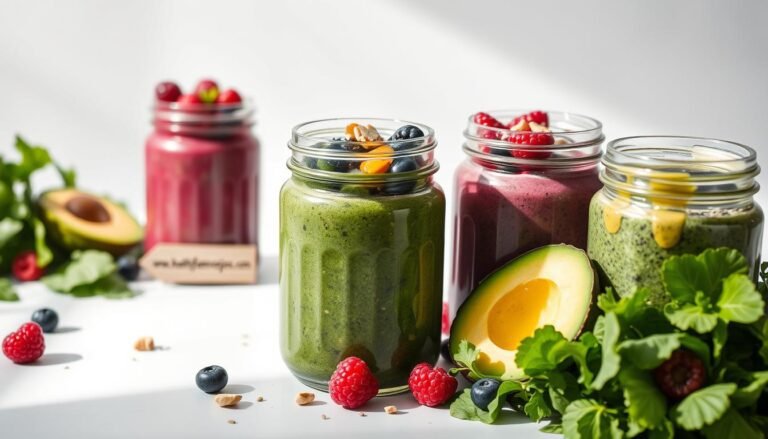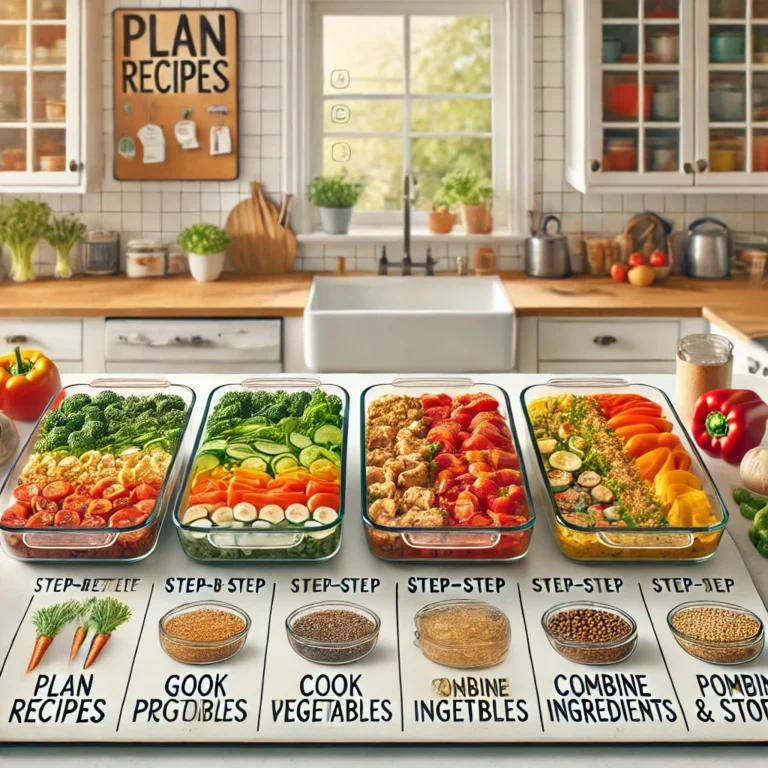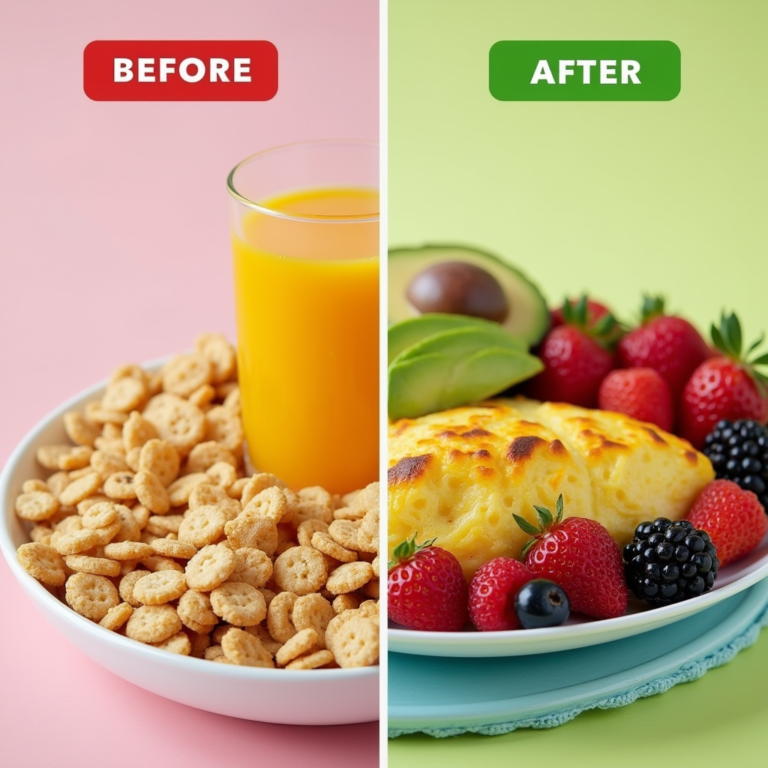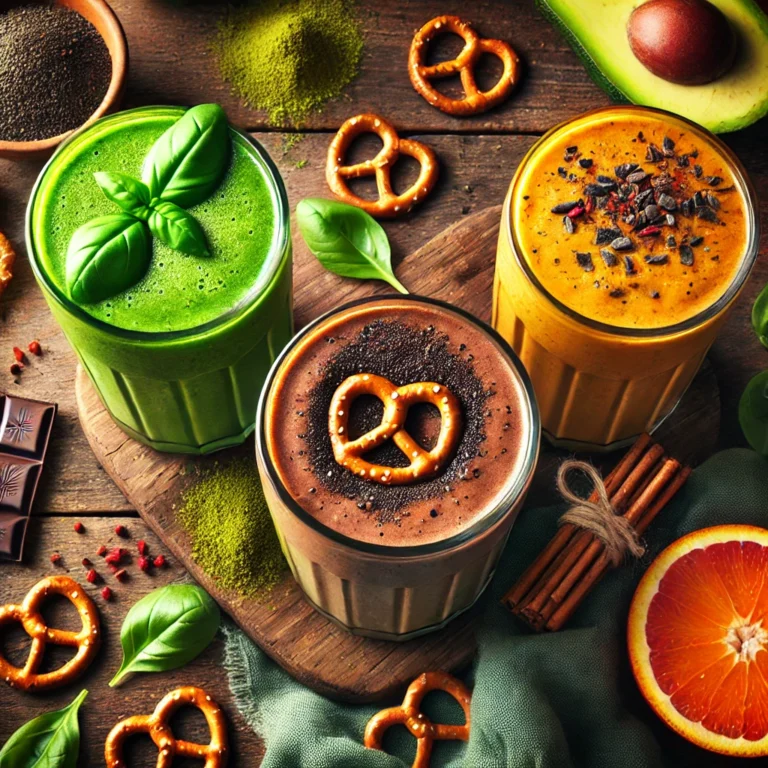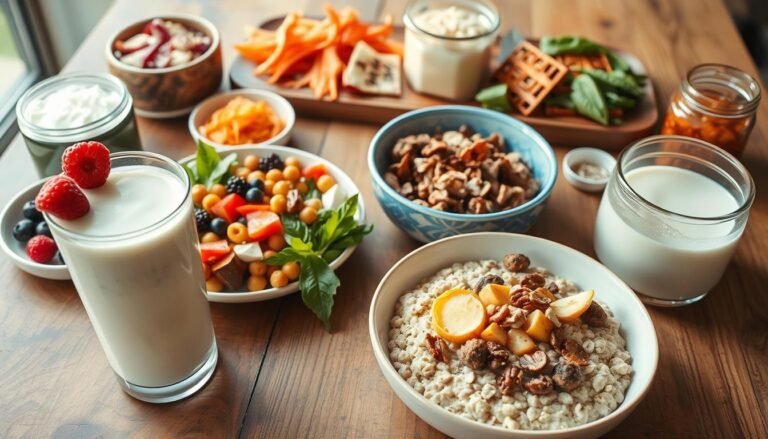Vitamins And Minerals For Aging: Best Ways To Stay Strong and Healthy

Table of Contents
Introduction: Unlocking the Secrets of Vitamins And Minerals For Aging
Have you ever wondered what secrets lie behind maintaining vitality and strength as we age? As we journey through life, our bodies undergo numerous changes that can affect how we absorb and utilize essential nutrients. The key to unlocking vitamins and minerals for aging might just lie in understanding and incorporating the right vitamins and minerals into our daily lives. In this article, we’ll explore the best ways to stay strong and healthy by focusing on the most crucial vitamins and minerals for aging.
Overview: A Recipe for Healthy Aging
While this article isn’t about a traditional recipe, it’s a guide to creating a balanced diet rich in essential vitamins and minerals. The “recipe” for healthy aging involves understanding which nutrients are vital, how to incorporate them into your meals, and how to maintain a balanced lifestyle. This guide about vitamins and minerals for aging is easy to follow, requires minimal time commitment, and is suitable for all skill levels.
Time Requirement: Ongoing, as part of your daily diet.
Difficulty Level: Easy, with simple dietary adjustments.
Essential Ingredients: Key Vitamins and Minerals
Here are the essential vitamins and minerals for healthy aging, along with their benefits and food sources:
| Vitamin/Mineral | Benefits | Food Sources | Recommended Daily Intake |
| Magnesium | Muscle strength, heart health, blood sugar regulation | Nuts, seeds, whole grains, spinach, dark chocolate | 400-420 mg (men), 310-320 mg (women) |
| B Vitamins | Energy production, nerve function, heart health | Meat, fish, eggs, whole grains | Varies by type (e.g., B12: 2.4 mcg) |
| Calcium | Bone health, muscle function | Milk, yogurt, cheese, kale, tofu | 1,000-1,200 mg |
| Vitamin D | Bone health, immune system | Sunlight, fatty fish, fortified dairy | 600-800 IU |
| Omega-3s | Heart health, brain function | Fatty fish, nuts, seeds | 250-500 mg |
| Zinc | Immune system, wound healing | Oysters, beef, chicken, fortified cereals | 11 mg (men), 8 mg (women) |
| Vitamin B6 | Immune system, nerve function | Meat, fish, whole grains | 1.5-1.7 mg |
| Vitamin B12 | Brain health, energy production | Meat, fish, eggs, fortified cereals | 2.4 mcg |
| Vitamin E | Antioxidant properties, skin health | Nuts, seeds, vegetable oils | 15 mg |
Substitutions and Variations:
- For vegetarians and vegans, consider plant-based sources like fortified cereals for B12 and vitamin D.
- Use nuts and seeds as alternatives to fish for omega-3s.
Step-by-Step Instructions: Incorporating Vitamins and Minerals into Your Diet
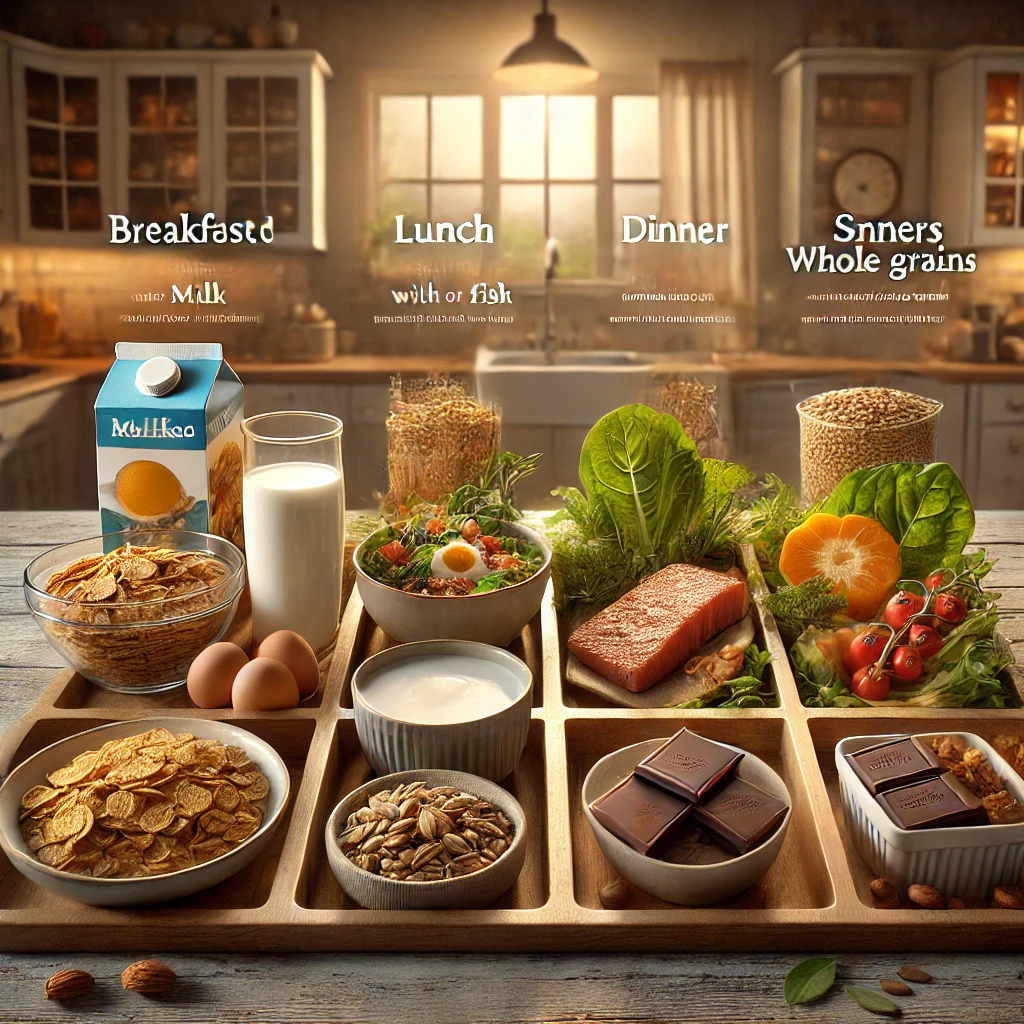
- Start with Breakfast:
- Include fortified cereals for vitamin B12 and vitamin D.
- Add nuts or seeds for magnesium and omega-3s.
- Lunch and Dinner:
- Incorporate lean meats or fish for B vitamins and zinc.
- Use whole grains for magnesium and B vitamins.
- Add leafy greens like spinach for magnesium and calcium.
- Snacks:
- Enjoy dark chocolate for magnesium.
- Have nuts and seeds for omega-3s and magnesium.
Tips for Cooking and Preparing Techniques:
- Use olive oil for vitamin E benefits.
- Cook with herbs and spices to enhance flavor without salt.
Assembly: Building a Balanced Diet
To assemble your daily meals, focus on variety and balance:
- Breakfast: Oatmeal with nuts and fortified milk.
- Lunch: Grilled fish with whole grains and vegetables.
- Dinner: Stir-fry with lean meat, vegetables, and whole grains.
- Snacks: Fresh fruits and nuts.
Tips for Presentations:
- Use colorful plates to make meals visually appealing.
- Experiment with different herbs for added flavor.
Storage and Make-Ahead Tips
- Store Ingredients: Keep nuts and seeds in airtight containers to maintain freshness.
- Prepare Ahead: Cook meals in bulk and refrigerate or freeze for later use.
- Reheat Safely: Use low heat to prevent nutrient loss.
Recipe Variations: Creative Alternatives
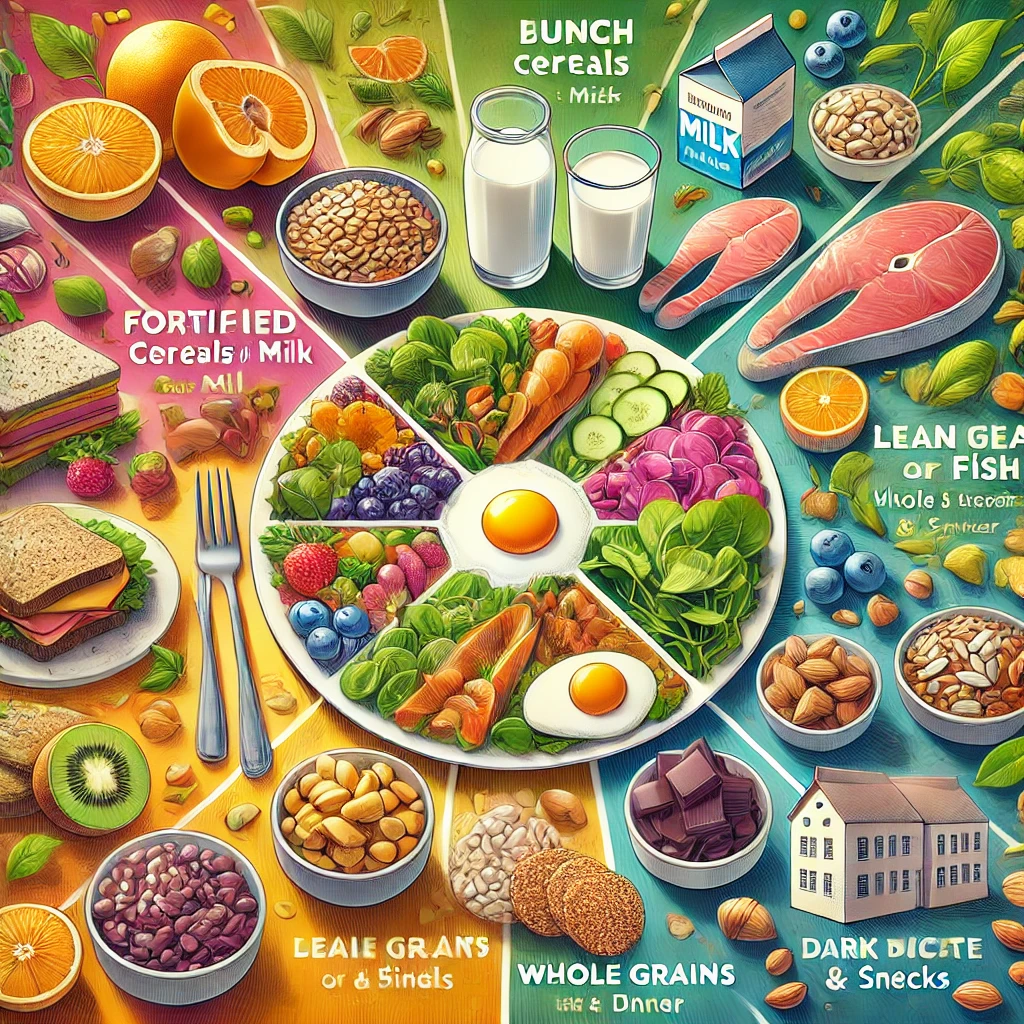
Incorporating a variety of recipes into your diet can keep mealtime exciting and ensure you’re getting a broad range of essential vitamins and minerals. Here are some creative alternatives to traditional dishes, each designed to support healthy aging:
1. Vegan Options
Vegan diets can be rich in nutrients if planned carefully. Here are some vegan alternatives:
- Vegan Quinoa Bowl:
- Replace chicken with roasted tofu or tempeh.
- Add sautéed spinach and bell peppers for extra vitamins.
- Use avocado for healthy fats and a creamy texture.
- Lentil and Mushroom Curry:
- Cook lentils with mushrooms, onions, and a blend of Indian spices.
- Serve over brown rice or whole-grain naan for a filling meal.
2. Gluten-Free Options
For those with gluten intolerance or sensitivity, here are some gluten-free alternatives:
- Grilled Salmon with Quinoa and Vegetables:
- Replace traditional grains with quinoa or brown rice.
- Grill salmon for omega-3s and pair with roasted vegetables like broccoli and carrots.
- Stuffed Bell Peppers:
- Fill bell peppers with a mix of cooked rice, black beans, diced tomatoes, and chopped cilantro.
- Bake until the peppers are tender for a colorful and nutritious meal.
3. International Flavors
Exploring international cuisines can add variety to your meals:
- Korean-Style Stir-Fry:
- Stir-fry chicken or tofu with kimchi, spinach, and bell peppers.
- Serve over brown rice for a spicy and nutritious meal.
- Mediterranean Chickpea Salad:
- Mix chickpeas with chopped cucumber, tomatoes, feta cheese (or vegan alternative), and a drizzle of olive oil.
- Add a sprinkle of oregano for extra antioxidants.
4. Breakfast Variations
Starting your day with a nutrient-packed breakfast is crucial:
- Avocado Toast:
- Toast whole-grain bread and top with mashed avocado, a fried egg, and a sprinkle of red pepper flakes.
- Add a side of mixed berries for antioxidants.
- Chia Seed Pudding:
- Mix chia seeds with almond milk and let it sit overnight.
- Top with sliced almonds and fresh fruit for a fiber-rich breakfast.
5. Snack Options
Healthy snacking can help maintain energy levels throughout the day:
- Trail Mix:
- Combine nuts, seeds, and dried fruits for a quick snack rich in magnesium and omega-3s.
- Add dark chocolate chips for an antioxidant boost.
- Yogurt Parfait:
- Layer Greek yogurt with granola, mixed berries, and a drizzle of honey.
- This snack is high in calcium and probiotics for digestive health.
6. Dinner Ideas
Here are some dinner recipes that support healthy aging:
- Baked Cod with Lemon and Herbs:
- Season cod with lemon juice, olive oil, and herbs like thyme and rosemary.
- Bake until flaky for a low-fat, high-protein meal.
- Vegetarian Stuffed Portobellos:
- Fill Portobello mushrooms with a mix of sautéed spinach, garlic, and feta cheese (or vegan alternative).
- Bake until golden for a hearty, plant-based dinner.
7. Desserts
Even desserts can be made healthier:
- Dark Chocolate-Dipped Fruit:
- Dip fresh or dried fruits like strawberries, apricots, or cranberries in melted dark chocolate.
- Enjoy as a sweet treat rich in antioxidants.
- Baked Apples:
- Core apples and fill with cinnamon, nutmeg, and a drizzle of honey.
- Bake until tender for a warm, comforting dessert.
8. Soups
Soups are a great way to pack in nutrients:
- Lentil and Vegetable Soup:
- Simmer lentils with a variety of vegetables like carrots, celery, and onions.
- Season with herbs for a comforting and nutritious meal.
- Butternut Squash Soup:
- Roast butternut squash with garlic and onions, then blend with vegetable broth.
- Add a swirl of cream or coconut milk for a creamy texture.
9. Salads
Salads can be more than just greens:
- Grilled Chicken and Avocado Salad:
- Top mixed greens with grilled chicken, sliced avocado, cherry tomatoes, and a sprinkle of feta cheese (or vegan alternative).
- Drizzle with olive oil and lemon juice for a refreshing meal.
- Quinoa and Black Bean Salad:
- Mix cooked quinoa with black beans, diced tomatoes, and chopped cilantro.
- Add a squeeze of lime juice for a flavorful and filling salad.
10. Smoothies
Smoothies are a quick way to get a nutrient boost:
- Green Smoothie:
- Blend spinach, banana, almond milk, and a handful of ice for a refreshing and healthy drink.
- Add a scoop of protein powder for extra muscle support.
- Berry Bliss Smoothie:
- Combine frozen mixed berries, Greek yogurt, and a drizzle of honey.
- Blend until smooth for a sweet and antioxidant-rich treat.
These creative alternatives offer a variety of flavors and textures to keep your diet engaging and support healthy aging. Whether you’re looking for vegan, gluten-free, or international options, there’s something for everyone to enjoy.
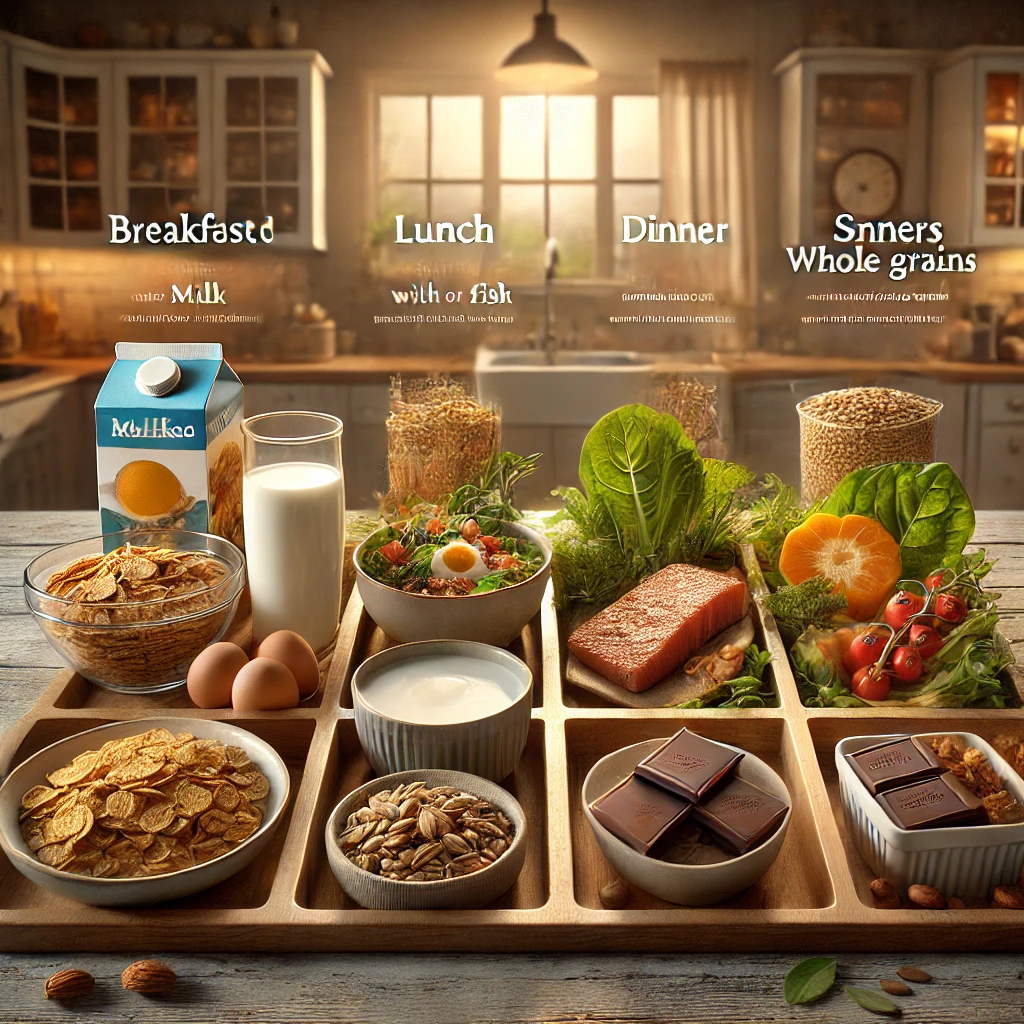
Conclusion: Embracing Healthy Aging
Incorporating these essential vitamins and minerals into your diet is a simple yet powerful way to support healthy aging. By making a few adjustments to your meals and snacks, you can ensure you’re giving your body the nutrients it needs to stay strong and vibrant. Experiment with different recipes and flavors to keep your diet engaging and enjoyable. Remember, healthy aging is about consistency, balance, and a positive outlook on life.
FAQs
- Q: How can I ensure I’m getting enough vitamins and minerals?
- A: Focus on a balanced diet with a variety of whole foods. Consider supplements if necessary, but always consult with a healthcare provider first.
- Q: What are the health benefits of these vitamins and minerals?
- A: They support heart health, bone strength, immune function, and cognitive health, among other benefits.
- Q: Can I store prepared meals for later?
- A: Yes, cook meals in bulk and store them in the refrigerator or freezer to maintain freshness and convenience.
- Q: Are there any specific cooking techniques to preserve nutrients?
- A: Use low heat and minimal water when cooking vegetables to retain vitamins and minerals.
- Q: How often should I consult a healthcare provider about my diet?
- A: Regularly, especially if you have specific health conditions or are considering supplements.
Source links
- AARP: https://www.aarp.org/health/healthy-living/essential-nutrients-for-healthy-aging/
- Discusses essential nutrients for healthy aging.
- National Institute on Aging (NIA): https://www.nia.nih.gov/health/vitamins-and-supplements/vitamins-and-minerals-older-adults
- Provides information on vitamins and minerals for older adults.
- National Institute on Aging (NIA): https://www.nia.nih.gov/health/vitamins-and-supplements/dietary-supplements-older-adults
- Offers guidance on dietary supplements for older adults.
- Farrer Park: https://www.farrerpark.com/farrerhealth/articles/detail.html?id=119
- Discusses essential vitamins and minerals for different age groups.
- WebMD: https://www.webmd.com/healthy-aging/ss/slideshow-aging-vitamins-older-people
- Highlights vitamins and minerals needed as you age.
- Healthline: https://www.healthline.com/nutrition/anti-aging-supplements
- Lists anti-aging vitamins and supplements.
- Harvard School of Public Health: https://nutritionsource.hsph.harvard.edu/vitamins/
- Provides general information on vitamins and minerals.
- Age UK: https://www.ageuk.org.uk/information-advice/health-wellbeing/healthy-eating/vitamins-for-older-people/
- Offers advice on vitamins for older people.
- Mayo Clinic: https://www.mayoclinic.org/healthy-lifestyle/nutrition-and-healthy-eating/expert-answers/vitamins-for-seniors/faq-20414069
- Discusses vitamins for seniors.
- Academy of Nutrition and Dietetics: https://www.andjrnl.org/article/S2212-2672(20)30134-0/
- Provides insights into nutrition for older adults.
